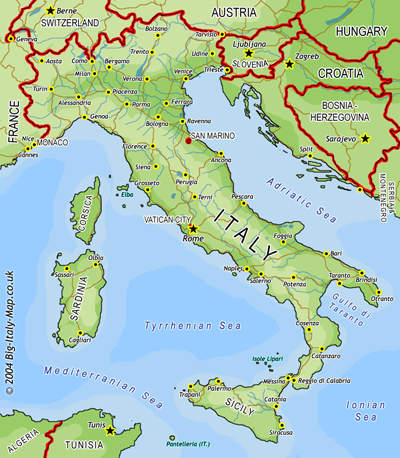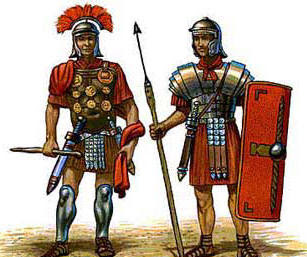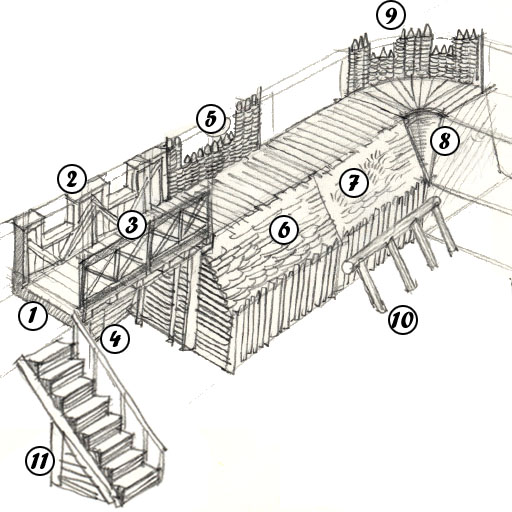Darth J wrote:Since the Lord has not revealed the location of where the Book of Mormon narrative took place, we can look at parallels with other cultures to deduce what real-world place is a likely place for the civilizations described in the scripture to determine where it most likely took place.
According to the Joseph Smith History canonized in The Pearl of Great Price, the angel Moroni told him that the golden plates were "an account of the former inhabitants of this continent." Many readers assume that "this continent" means North America. However, a careful reading of D&C 133 indicates that all the land mass in the world is really one continent from the Lord's point of view:
23 He shall command the great deep, and it shall be driven back into the north countries, and the islands shall become one land;
24 And the land of Jerusalem and the land of Zion shall be turned back into their own place, and the earth shall be like as it was in the days before it was divided.
D&C 133. Therefore, it is clear that "this continent" means "the earth," and we should not assume that "this continent" means only North America, as other readers have incorrectly concluded. Because the entire earth is "this continent," the Book of Mormon taking place in Europe is really not a problem if we understand how the Lord reckons things.
Key features of Book of Mormon geography are that there is a western sea and an eastern sea and the land is longer from north to south than from east to west.
Boo-yah!
Also important in Book of Mormon geography is the river Sidon, the only river mentioned by name, which stretched north and south. Although some believe that the Sidon ran northward, the text of the Book of Mormon does not actually say that, and it is more likely that the river Sidon ran to the southwest and emptied into the sea west. Like this:
Volcanic activity also appears to play a role in Book of Mormon geography (3 Nephi 8:5-18). Vesuvius and Mount Etna, anyone?
What about some of the features of the civilizations themselves? I don't have time right now to explain how the Jaredites were the Etruscans, so let's just look at some highlights of Jaredite and Nephite civilization and their parallels in ancient Italy.
Buildings and structures made of cement? Check. (Note that concrete is cement with additional ingredients.)
Barley and other grains? Check.
Silk? Yes sir.
Complex roads/highways? You bet.
Metal swords? You better believe it.
Breastplates, helmets, and other armor for soldiers? You tell me:
Horses? Yes.
Elephants, goats, cattle, swine, flocks? Indeed.
Chariots? Come on, you've seen Ben Hur.
Metallurgy? Of course.
Gold, silver, pearls, costly apparel? Yes, sir.
An urbanized, agrarian society? That's exactly what the ancient Romans were.
Writing? Check it out:
A lunar and solar calendar? Another bull's eye!
Fortifications in times of war? They had that, too:
One puzzler, at first glance, might be: how did the golden plates end up buried in upstate New York when the Book of Mormon happened in Italy? The Book of Mormon describes three times when the Lord inspired people to make a journey by sea: the Jaredites, the Lehite party, and the Mulekites. There is no reason not to suppose that the Lord could not have also inspired Moroni to journey across the sea (and probably instruct him how to build a vessel, as with Nephi and the brother of Jared).
Incidentally, placing the Book of Mormon in ancient Italy also resolves that old chestnut critics like to point out that there are Greek names in the Book of Mormon, like Lachoneus, Timothy, and Alpha and Omega. It is well known that the Romans were heavily influenced by Greece, and that Greek was widely spoken in the Roman Empire. Thus, this so-called mistake of Greek names is dead and buried. There are also many aspects of Rome's interaction with Egypt, which interestingly parallels the Egyptian fetish we seem to find repeatedly in the Book of Mormon.
The above is just a brief introduction, but it should at least give the critics pause that maybe their issue with the Book of Mormon is that they're looking in the wrong place.
Wow ...its weird. I was just reviewing some pictures from the Hubble revealing in great detail some of the surface features on Mars. I spotted virtually 100% accurate contours that match the geographic details of middle Italy. Just as I was about to gasp, I was set back in my chair by what appeared to be a small stack of golden plates.
This PROVES it. The Book of Mormon is from MARS, and it was returned there to guide the people of Mars who are 7' tall, live for a thousand years and drive "chariots" that look suspiciously like Amish buggies.
-BH
.





